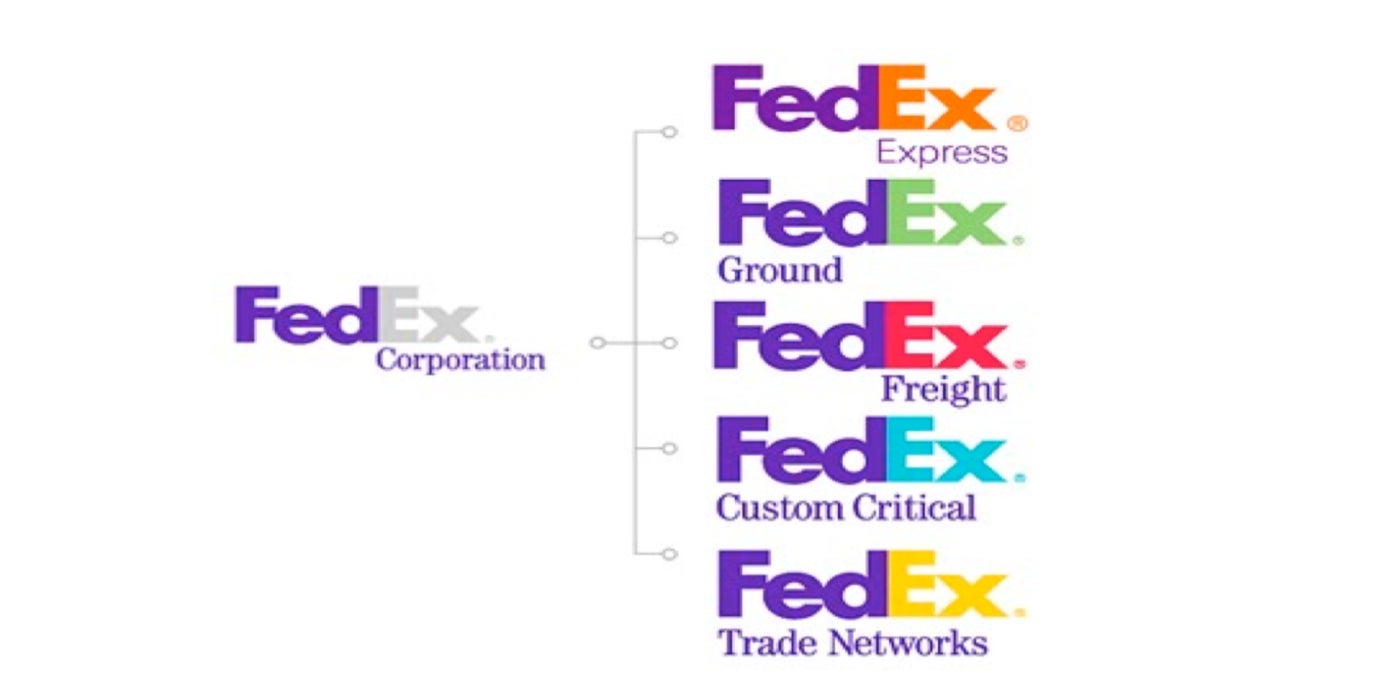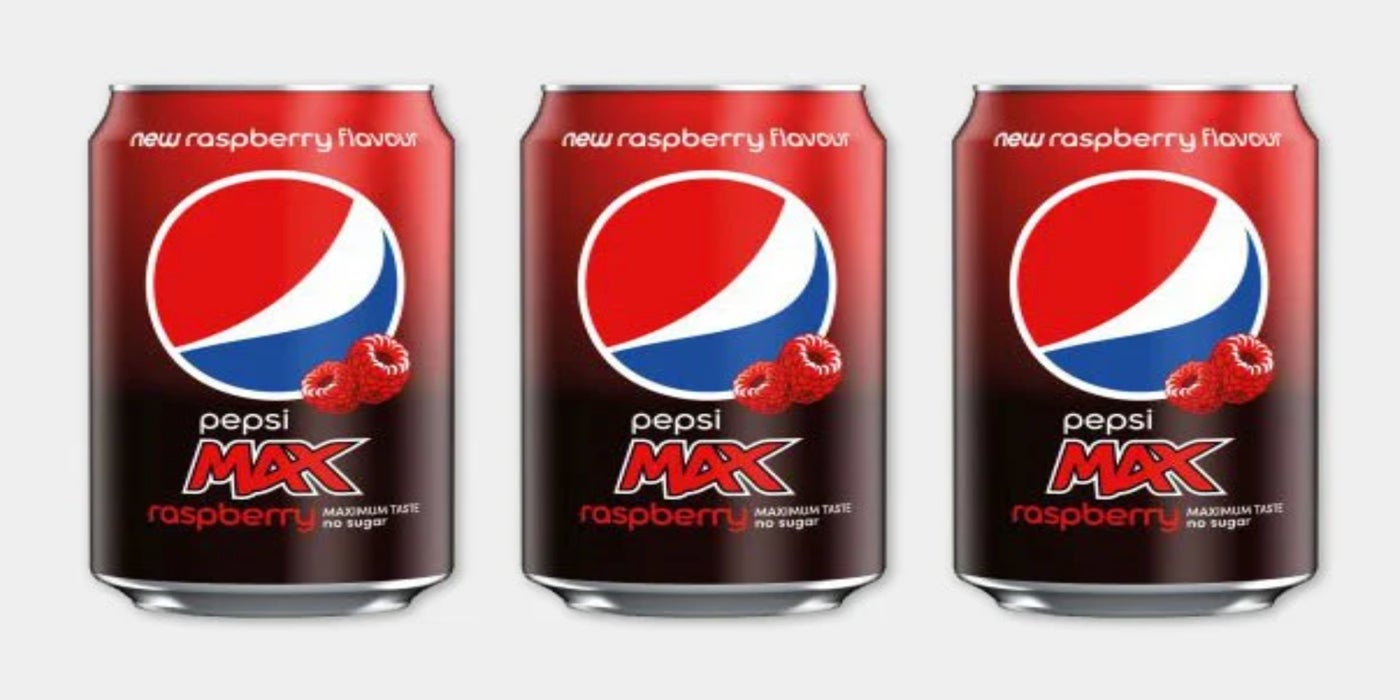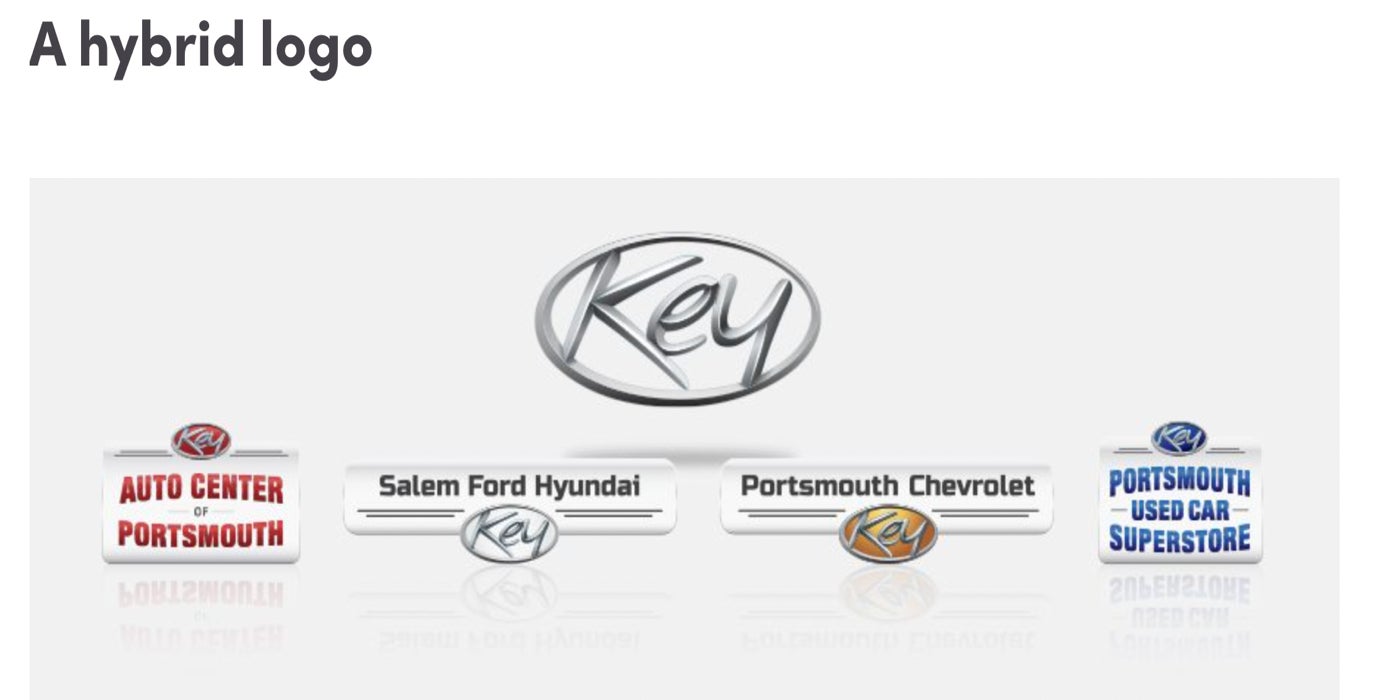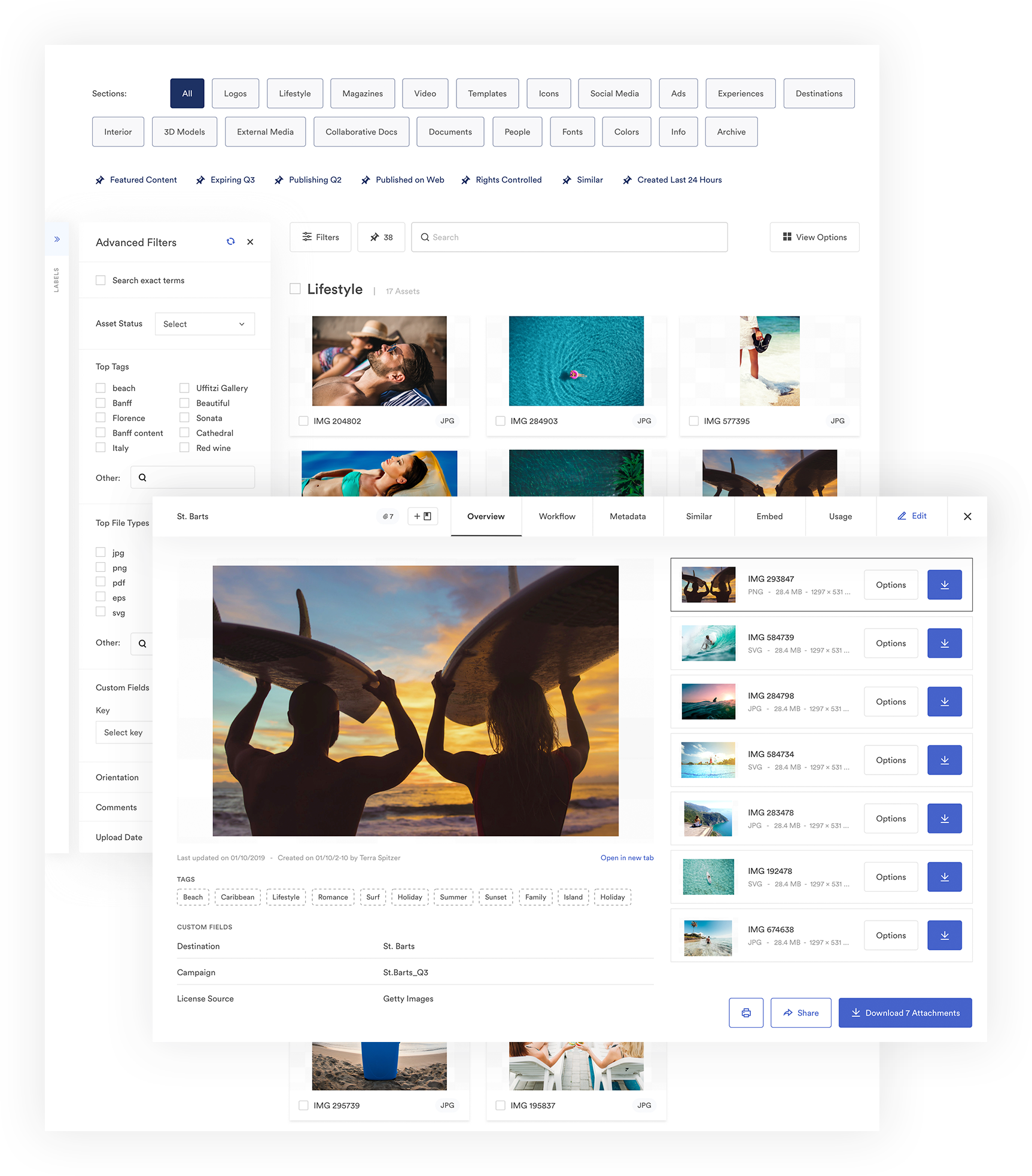- What is brand architecture?
- Why is brand architecture important?
- Types of brand architecture
- Which brand architecture type is best for your brand?
- Determining your current brand architecture
- How to create a clear brand architecture
- Key Factors to Consider in Brand Architecture
- The case for using a DAM solution
- Start your brand architecture journey now
Get branding tips and expert advice delivered straight to your inbox.
Brands with clear brand architecture achieve 3.5 times more visibility compared to brands without it. That’s because consistently presented brands are easier to recognize and understand. Without brand architecture in place, companies with expanding product lines, mergers and acquisitions may find that their overall presentation is confusing and disorganized to both internal teams and customers. No matter how much you invest into marketing your business, without brand architecture you’ll still hear people ask, “So, what is it that your company does again?”
To clear up the confusion and keep customers interested, you need to infuse what you offer into how your master brand communicates, looks, and feels. That’s where brand architecture comes in.
In this post, we’ll discuss how starting with a clear brand architecture can help achieve marketing and brand identity goals. We’ll also clearly define all of the different brand architecture models as well as answer your most common questions.
What is brand architecture?
Brand architecture is a company’s organizational structure for its parent brand and related sub-brands, products and services.
It’s the framework in which connected brands relate to one another in terms of the overarching master brand story they’re telling. This allows audiences to navigate your offerings and clearly understand your brand’s value. A master brand is the name applied to a group of brands overall. Your brand architecture models may include logos, color palettes, style guides and other components that ensure consistency for products and services.
A well-built brand is a consistent brand. Take a look at our comprehensive guide with HubSpot to see how growing brands can scale with consistency.
Why is brand architecture important?
The guidelines your company includes in your brand architecture help creative teams quickly create deliverables — they know exactly what words, colors or images to use to stay true to your brand. Brand architecture is also important externally. It helps customers recognize your products or services. Consistency in branding can boost sales by 33%.
Here’s what a strong corporate brand architecture does for your business:
1. Clear (and consistent) brand positioning
A well-defined and cohesive brand portfolio helps your customers identify your parent brand and sub-brands.
2. Reduced marketing expenses
A consistent brand architecture and clearly defined master brand generates clarity within the organization itself. When it’s clear to everyone how each brand contributes to the master brand’s overarching goal, marketing teams will see where to allocate their financial resources to get a better return on investment.
3. Platform for growth and expansion
In brand management, the goal is to put each of your brands in a position that targets a specific segment of your audience, so your sub-brands have room to grow. However, ensuring there is a clear and cohesive parent brand for audiences to follow helps increase overall brand loyalty.
4. Increased confidence among stakeholders and investors
Your stakeholders and investors will appreciate the delineation of your brands, understanding brand properties and knowing the audiences for each of your brands.
5. More cross-selling opportunities
When your value propositions are crystal clear, the links between your product offerings become obvious as well. This, of course, presents many opportunities for cross-selling. One example of this is Procter & Gamble’s brand bundling campaigns that feature multiple face products (think wash, cream, etc.), each with their own branding, in a single makeover campaign.
A well-defined brand architecture means having a diverse range of differentiated products and services that complement each other. In the Procter & Gamble example, products such as shampoo and toothpaste form a complete hygiene routine without being in competition with one another. Using this strategy puts you in a good position to leverage the right offer (in the P&G example this means supplies to help you get ready for the day) at the right time (as you advertise other beauty supplies that share the same goal) and within the right context (a routine everyone is familiar with).
6. Tell a compelling brand story
Every brand, product offering, or service tells a story. But put them all in a single corporate brand portfolio without thought and you might create a narrative that’s confusing for your customers. What you want to do is combine all these seemingly disparate stories and allow them to tell one overarching story that speaks to your audience on a deeper level. Otherwise, your parent brand and sub-brands are competing with each other and failing to connect with customers.
7. Build brand equity
Brand equity is the value of your brand, products and services as perceived by customers. It begins with awareness of your master brand but it continues when you have consistent messaging and themes across all of your sub-brands on any platforms you use. Your social presence and your customer service can help build brand equity. Not sure where to begin? Consider how you plan to manage your brand assets so that they are uniform yet distinct and well organized.
8. Maintain brand consistency
A documented brand architecture equals consistent strategy. This is especially true for brands that are constantly evolving. Without proper brand architecture in place, you run the risk of losing important knowledge or assets. Even if your team is on the ball now you will find that over time priorities can shift and key employees may move into new positions or onto other companies. Creating a single source of truth for your brand identity ensures your messaging and brand presence will remain consistent over time no matter what changes with your internal teams.
Read on to learn about the different types of brand architecture models and see some examples of how top companies have implemented a cohesive branding strategy.
Types of brand architecture
The three types of brand architecture are Branded House, House of Brands and Endorsed Brand.
The Branded House

Source: IDeasBIG
In a Branded House model, the company has one single master brand with several house brands. Typically, a branded house’s brands target a more specific segment of its audience.
Branded house examples:
- FedEx — FedEx Express, FedEx Ground, etc.
- Apple — iPhone, Apple Pay, iPad, etc.
- Virgin — Virgin Mobile, Virgin Pulse, Virgin Money, etc.
- Google — Google Docs, Google Sheets, etc.
- Ford — Ford Fleet, Ford Credit, etc.
House of Brands

In a “House of Brands” structure, the master brand takes a back seat, giving the sub-brands the freedom to shine on their own. Brands under the house of brands model are “rogue” brands because they can have their own audiences, marketing strategies and brand identities.
House of brands examples:
- Procter & Gamble (master brand of Pampers, Tide, Bounty, and more)
- Yum! Brands (master brand of KFC, Pizza Hut, Taco Bell, and The Habit Burger Grill)
- PepsiCo (master brand of Quaker Oats, Gatorade, Aquafina, and more)
- Oracle (master brand of PeopleSoft, NetSuite, Sun Microsystems, and more)
- Gap (master brand of Old Navy, Athleta, Piperlime, and more)
The Endorsed Brand

If the house of brands and the branded house are opposites, the endorsed brand falls somewhere in between. Endorsed brands have their own identities, but they are not separate from the master brand. As is the case with the House of Brands structure, endorsed brands have their own identities. The only difference is that the master brand is also well-known, and most people are aware that the master brand owns and operates other companies under different names. The endorsed brand is the primary focus and will generally be known to a wider audience.
Endorsed brand examples:
- Nescafe by Nestle
- Sony Playstation
- Polo by Ralph Lauren
- Residence Inn by Marriott
Sub-brand

Source: FoodBev Media
Sub-brands are similar to house brands, but unlike house brands they don’t replicate the master brand’s image, and they expand upon the master brand’s offerings.
Sub brand examples:
- Pepsi Max
- HBO Plus
- Walmart Neighborhood Market
- Amazon Alexa
- Uber Black
Hybrid Brand

Source: Vital
When companies acquire new brands and want to preserve the integrity of those brands, they may create a hybrid brand. A hybrid brand combines two or more branding structures into one unified brand. Companies who follow this structure may choose to apply some of the master brand’s architecture to the newly acquired brand. However, the business may also choose to preserve the acquisitions’ fonts, colors, product names or other branded qualities.
Hybrid brand examples:
- Key Auto Group
- ExxonMobil
- Gillette (a Procter & Gamble brand with its own legacy branding)
- Instagram (acquired by Facebook in 2012)
- Waze (acquired by Google in 2013)
Which brand architecture type is best for your brand?
Which brand architecture is the perfect fit for your business? Maybe you already have something in place or maybe you’re starting from scratch. Either way, you’ll need to assess each branch of your business.
Determining your current brand architecture
Before you make changes to your brand architecture, review your brand's mission, vision, and values, along with your business goals.
Next, take a look at your current product/service mix. As you look at each sub-brand, product or service, ask yourself the following questions:
- How is this brand performing in terms of our goals for the master brand?
- How does the market perceive this brand?
- Does that perception align with the brand’s mission, vision and core values?
- Is this brand clashing with other brands in the company’s brand portfolio in terms of positioning in the market?
Once you’ve answered the above questions, you will have to take a hard look at your brand portfolio. Be forewarned: This step could involve some tough decisions. You may have to get rid of, sell or merge branches of your brand to strengthen the architecture you’re building.
The overarching marketing strategy of the master brand must take precedence over your brand variants.
How to create a clear brand architecture
- Research
Branding is all about the customer, so devote some time to understanding who your target audiences are for each brand, how they interact with your brands and what their expectations are. For example, imagine Coca-Cola suddenly decided to change its logo and drop its signature red color. Customers could be confused and irritated, unless Coca-Cola took time to explain those changes. Before you implement your strategy, make sure it truly makes sense for your portfolio.
- Strategy
You’ll need buy-in from your internal team in order to create your brand architecture. Creatives may see the value in this process once they realize how it will help them work more efficiently. Stakeholders will want to know the ROI of creating a brand architecture, and that may take time to measure. Frequent analysis and reporting can help you see the impact of your brand architecture.
Key Factors to Consider in Brand Architecture
Creating brand architecture can be a long process, especially when you have multiple internal stakeholders that need to approve changes. The following are some factors to consider.
Existing equity
Evaluate the strengths and weaknesses of your existing master brand. It may be difficult to be objective during this step, and some companies may benefit from inviting focus groups or external agencies to offer feedback on branding, brand clarity and brand recognition. Keep in mind that a sub-brand can “outgrow” the master brand. If that’s the case, your sub-brand could be the key to creating brand equity for all of your product lines.
Company culture
Your company culture should influence your branding, and vice versa. If your culture is energetic, creative and fun-loving, then your branding should reflect that.
Employees appreciate the opportunity to submit their input. Creating your brand architecture presents a perfect opportunity to do that. Hold a brainstorming session and ask employees to share words they think describe your culture. You’ll probably gather some interesting insights and a better understanding of how your brand is being represented.
Risk tolerance
Every company has its own level of risk tolerance, and that should be a consideration in your branding strategy.
For example, a large international brand that’s existed for decades could suffer disastrous consequences if a rebrand isn’t well received. A small startup, however, doesn’t have enough brand equity to be overly concerned with a branding strategy — if it doesn’t work out well the first time, it’s easy to rebrand in the early stages of business.
Rebranding costs
Costs, of course, are often a barrier to change. If you have to hire an outside agency to help you develop new logos, content or slogans, you could quickly incur a lot of expenses, especially during the approval and revision process, which can drag on for months in some cases.
To keep costs down, consider investing in incremental changes that will have the most impact. You may find that you do not need to overhaul all of your branding. Instead, invest in a platform that helps you organize and manage your digital assets. This will provide immediate and positive results without breaking the bank.
The case for using a DAM solution

A digital asset management (DAM) platform is a tool that makes it possible for companies to organize, distribute, collaborate on and securely store all types of digital files for all of their brands. Using one will help you manage deliverables as well as track the evolution of your master brand and its related brands over time. You can restrict access to legacy logos, share pieces only with the people who need to see them and keep a record of all feedback.
Brand portal
A cloud-based DAM platform with portal functionality lets you set up customizable homepages for storing and organizing assets by master, parent or sub-brand. Portals help internal teams quickly locate assets and put together relevant materials for external stakeholders, agencies and partners. Each portal can include quick links to other internal or external resources — your project management platform, spreadsheets, content management system and more.
Review and approvals
A DAM platform lets you capture actionable, real-time feedback from both internal and external stakeholders, shortening the approvals process for any task or deliverable. You can choose to let your whole team see and respond to internal feedback or client comments, or you can restrict permissions for certain files and conversations. This is helpful for streamlining the often complex review and approval process that occurs when dealing with multiple intersecting brands.
Digital rights management
DAM software lets you control who sees what — and when — across brands. You can set publish and expiration dates that correspond with campaign and license deadlines to ensure users can access only the assets that are currently available and compliant. Set expiration dates for single assets or collections, and automate alerts for digital assets that are about to expire. You can also automate the viewability of drafts and assets within and outside your DAM platform for full digital rights management control.
Start your brand architecture journey now
Brand architecture helps you work more efficiently, identify opportunities for growth and cross-promotion and ensure your messaging is consistent as you grow. But before you can take a deep dive into your branding, you have to get organized. A DAM platform can help you do that. Brandfolder is a cloud-based DAM platform that helps you implement guidelines and version controls and accelerates the approval process. Find out how Brandfolder can simplify your brand management — take a closer look!
